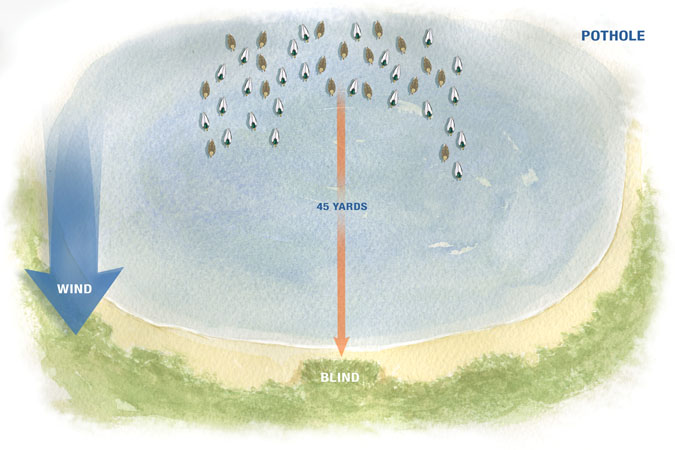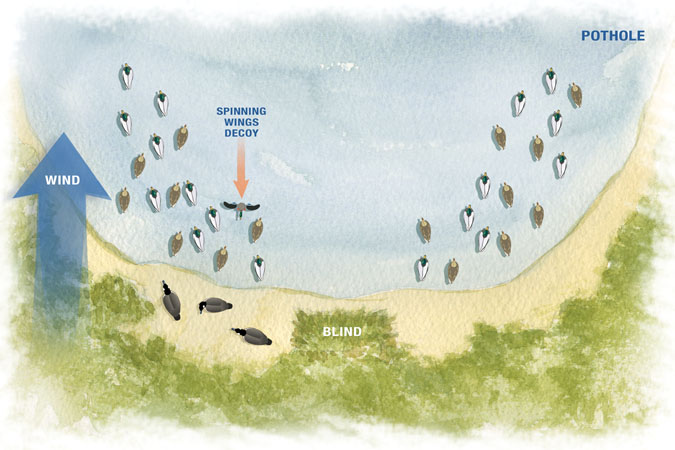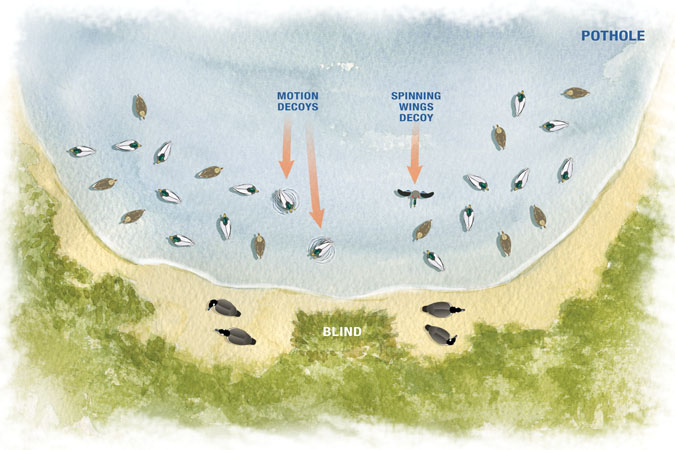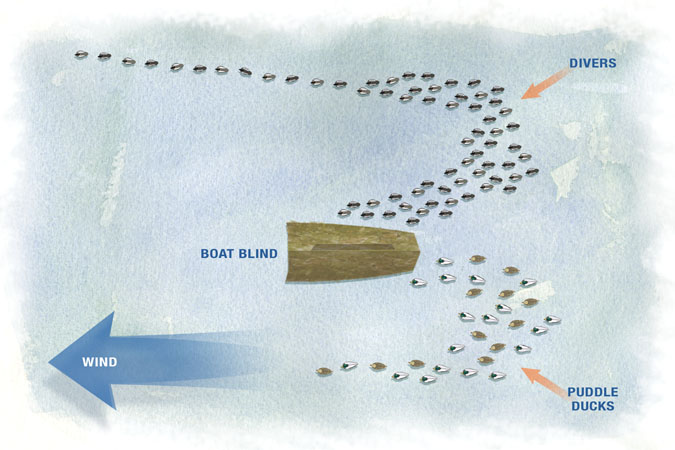1. Land set, wind in your face
This is one of the toughest situations. Ducks come in from behind you and right over your head. This is tough shooting and tough decoying. If hunting a pothole or inland water, make the set with the closest decoys at about 45 yards distance, or if on a small pond, against the opposite side. If hunting open water, such as a large lake, set the decoys as close to land as possible, and hope the ducks don't land out too far. You also can make a small set out about 45 yards and a larger set next to land, hoping the ducks will land in the pocket on the inside of the outer set. If they keep landing on the outside, move the decoys out a bit.

2. Land set, wind at your back
This also can be tough and provides some of the toughest shooting because the birds are coming right at you. Make the set tight against the land, but on both sides of the blind, with no dekes right in front of the blind. Ducks coming right at the blind will see any movement or problems with the blind. Decoy-shy ducks often are very wary of this set. It helps to set a motion decoy just to one side of the blind to draw their attention. Let hunters alternate to that side of the blind so everyone gets shots.
3. Land set, no wind
These "bluebird" days are always tough. Any number of motion-making decoys can help, ranging from simple manual jerk cords to flapping-wing electric models. Spread decoys out in this set and add several "sleeper" dekes.

4. Open-water set
An open-water set can draw any number of species in an area. It takes a lot of time to make, and you'll need lots of decoys of different species. In some cases, you'll need deep-water rigging, including mother lines or strings of decoys snapped on a single anchored line.

Featured photo by John Hafner Photography






